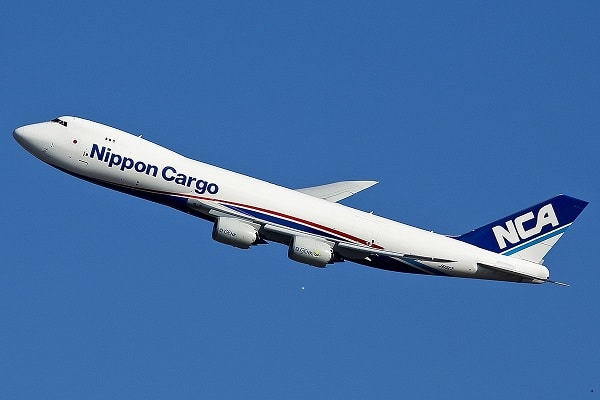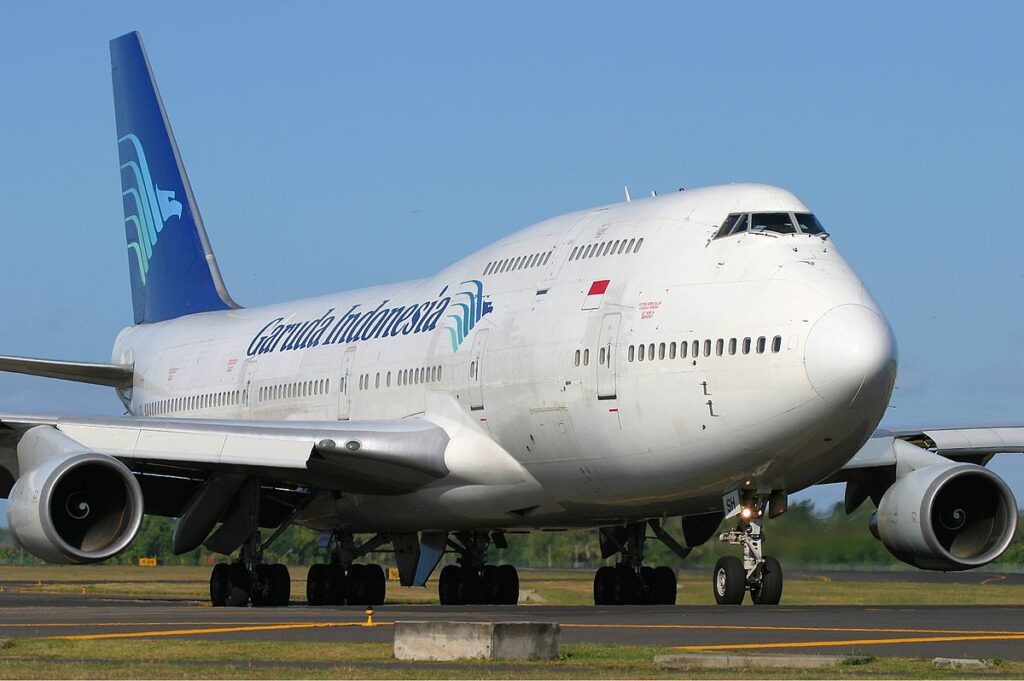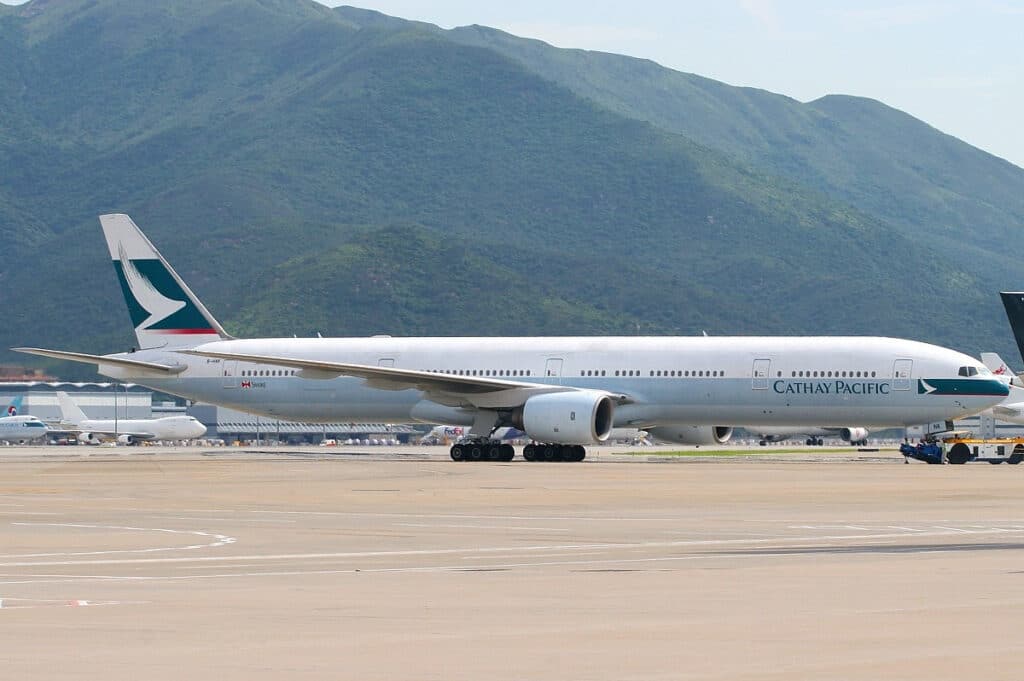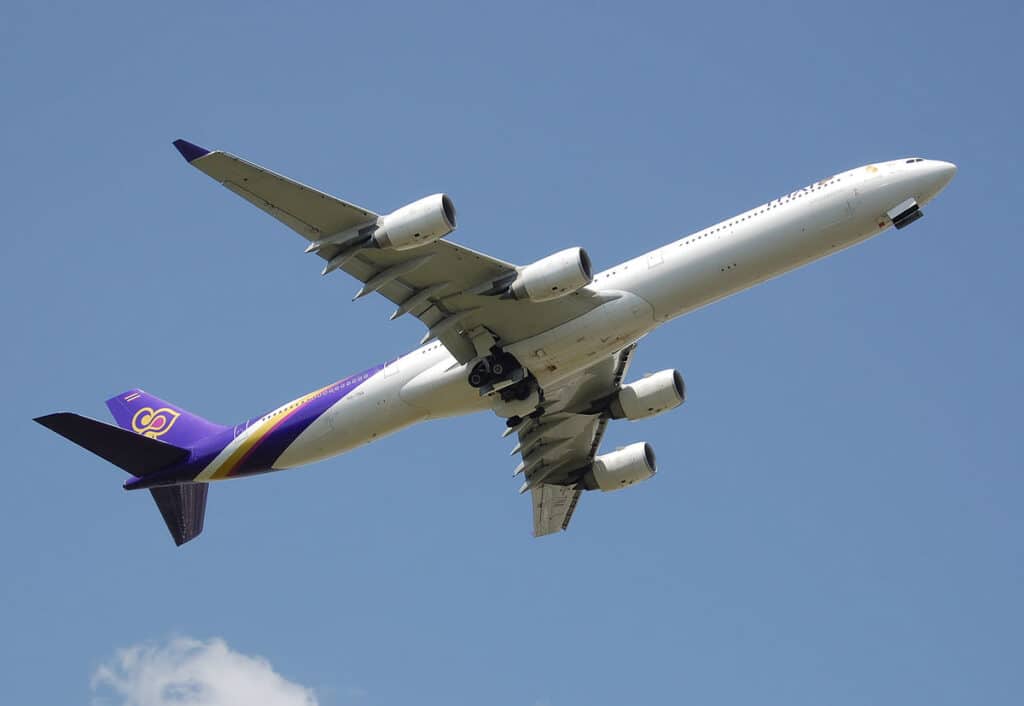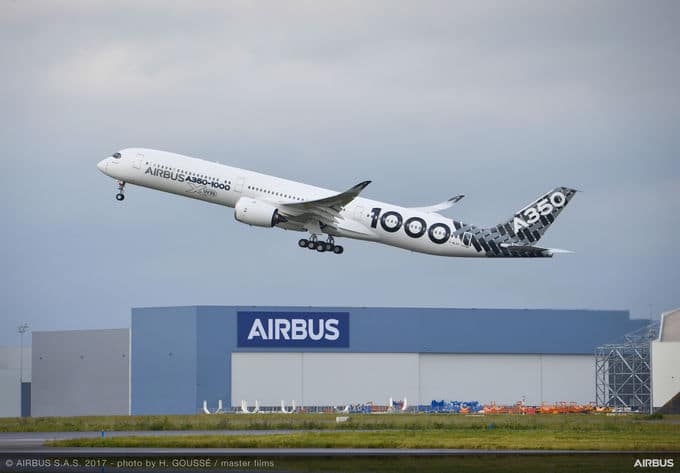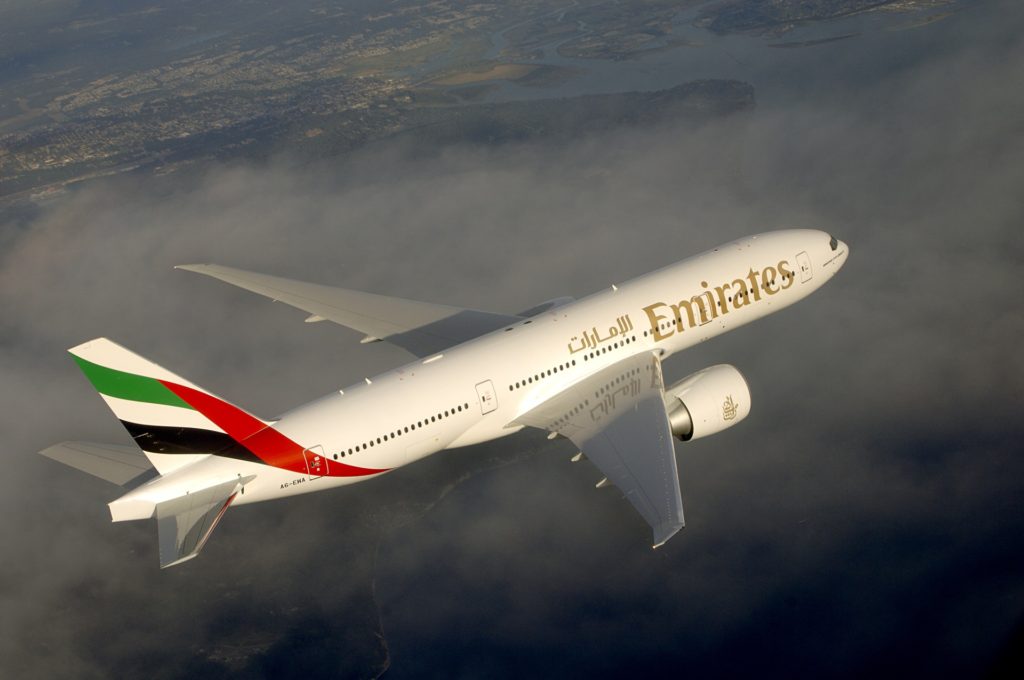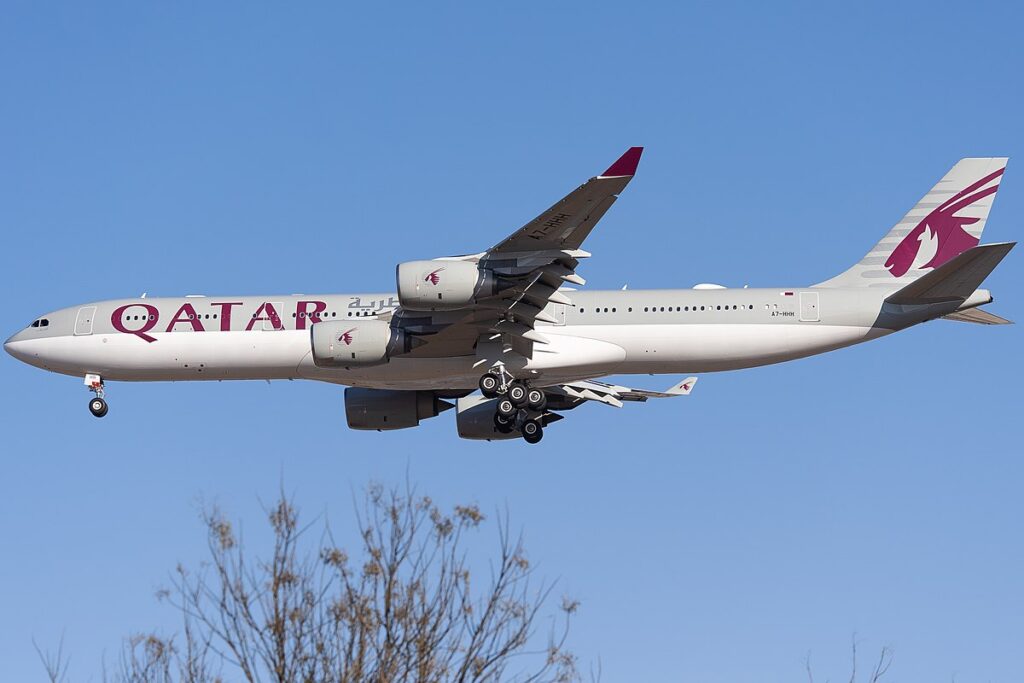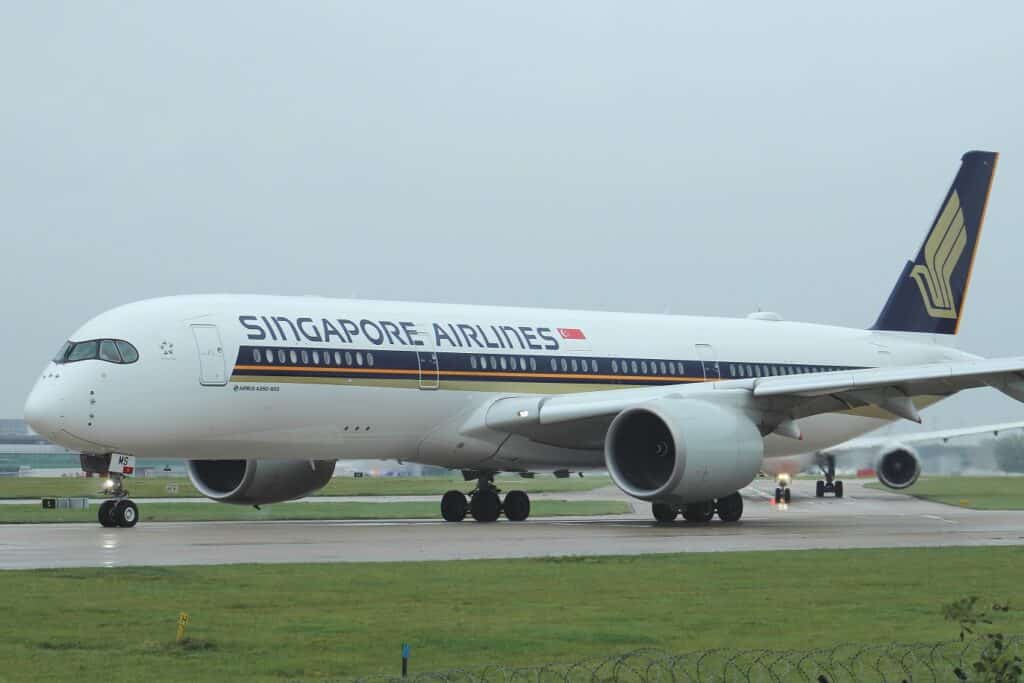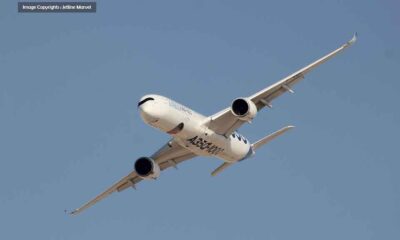Aviation
Top 10 Largest Passenger Aircraft in the World.
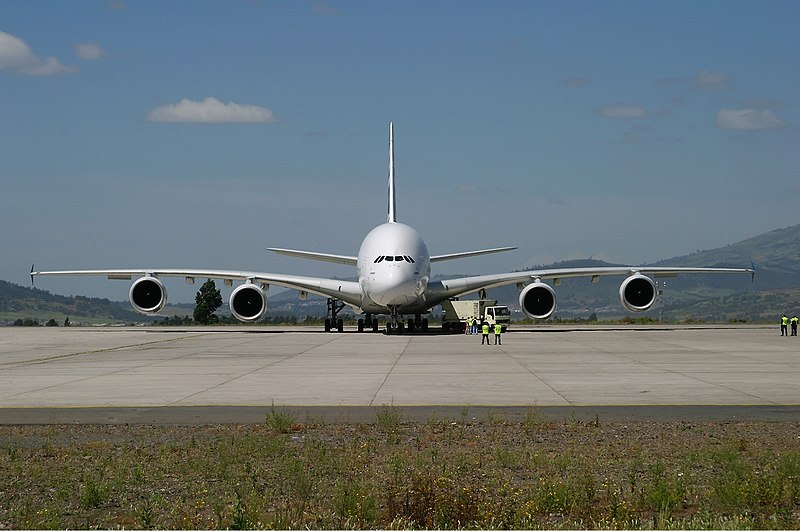
When we travel by air, we frequently consider the size of the aircraft and the number of passengers it can carry. In this article, we’ll take a look at some of the six largest aircraft ever built. Few airlines currently like flying such large aircraft.
Here are the Top 10 largest passenger aircraft that can transfer a number of passengers through these aircraft.
1. Airbus A380-800
A passenger aircraft built in France named the Airbus A380 800 has a seating capacity for 853 passengers in a single class or 644 in a two-tiered class. 8,208 nautical miles or 15,200 kilometers are the distances it can cover in a day. On April 27, 2005, the first flight was made. Despite having produced 242 aircraft as of 30 September 2020, Airbus announced the retirement of the A380-800 in 2021 due to weak sales. Emirates is now the largest A380 operator. Emirates has a total of 118 A380s, after receiving its final five in 2021, including the last of the type to be produced
2. Boeing 747-8
The Boeing 747-8 is a wide-body airliner created by Boeing Commercial Airplanes. A passenger aircraft made in the country is the Boeing 747-8. If a single-class system is used, it can hold 700 passengers and if a double-class system is used, it can hold 600 passengers. The aircraft can fly for up to 14,816 kilometers or 8,000 nautical miles. The brand-new Boeing 777X, which is scheduled to go into service in 2024, will take the place of the Boeing 747-8.
3.Boeing 747-400
The Boeing 747 400 is a passenger aircraft produced in the United States by Boeing. It can carry 660 passengers in an all-economy cabin, 524 passengers in a two-class configuration, and 416 passengers in a three-class configuration. It can travel up to 13,446 kilometers or 7,260 nautical miles. The first flight took place on April 28, 1988. The 747-400 was a significant advancement for the 747 series, featuring numerous structural and electrical upgrades.
Prior to the coronavirus crisis in the summer of 2020, British Airways, one of the major carriers, decommissioned its entire 747 fleet. Atlas Air is now its primary operator.
4. Boeing 777-300
The Boeing 777 300 is a passenger aircraft made in the US that can carry 451 passengers in a two-class configuration and 550 passengers in a single-class configuration. The aircraft made its maiden voyage in 2004 and is still a part of the fleets of airlines including United Airlines and Singapore Airlines. It can travel up to 11,135 kilometers or 6,013 nautical miles. With 131 777-300s in service, Emirates is the largest Boeing 777 operator in the world.
5. Airbus A340-600
The highest capacity member of the Airbus A340 Family, the A340-600 was introduced in 2002. 380 people can board the wide-body, four-engine aircraft. The two primary carriers as of October 2020 are Lufthansa (LHAB) (LHA) and Mahan Air. The Airbus A340-600 is the largest model in the A340 family, with a maximum seating capacity of 457 passengers. One of the largest fleets of these aircraft is operated by Lufthansa. This aircraft can travel 14,600 kilometers.
6. Airbus A350
The A350 is an airplane from the Airbus family. Despite its limited passenger capacity, it is the ideal alternative to the A380 aircraft. It is a long-haul, wide-body airplane that Airbus designed and built. the initial A350 concept put forth by Airbus in 2004. This aircraft can accommodate up to 480 passengers in single-class seating and 370 passengers in double-class seating. It has a Rolls Royce Trent engine that enables an aircraft to fly a distance of 16,100 kilometres.
7. Airbus A330-300
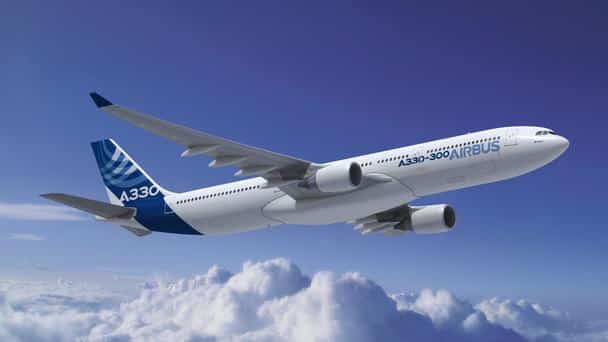
The twin-engine, wide-body Airbus A330-300 is a passenger aircraft with a medium to long range. With over 1000 produced, the aircraft is the A330 model with the highest sales. In 1994, Cathay Pacific Airlines conducted the inaugural flight of the original A330-300. It is an excellent aircraft for medium to long-haul flights with a maximum range of 6350 nautical miles. It can carry a up to 335 passengers.
8. Boeing B777-200LR
The second version of the B777 family is the Boeing 777-200LR. It was the first passenger jet ever introduced in 1995 that was completely integrated with computer-aided design. The B777-200LR has a 5,240 nautical mile range and a peak speed of 567 mph. The passenger capacity ranges from 314 to 451 passengers, depending on cabin setup.
9. Airbus A340-500
A passenger jet made in France is the Airbus A340-500. Although there were early deliveries in 2002, it was released in 2006. It is intended for 372 passengers in a single-class seat configuration and 313 passengers in a double-class layout. The Airbus A340-500 is built for international travel. It can go 9,000 nautical miles.
10. Airbus A350-900
The first version of the A350, which was created to compete with the Boeing 787 Dreamliner, is the A350-900. The plane has a 219-ft length and a 212-foot wingspan. In a three-class cabin layout, it can accommodate between 300 and 350 passengers, or it can seat up to 440 people. 8,100 nautical miles is the distance.

Aviation
JetBlue & Etihad Airways Join Forces for Loyalty Partnership under Codeshare Agreement
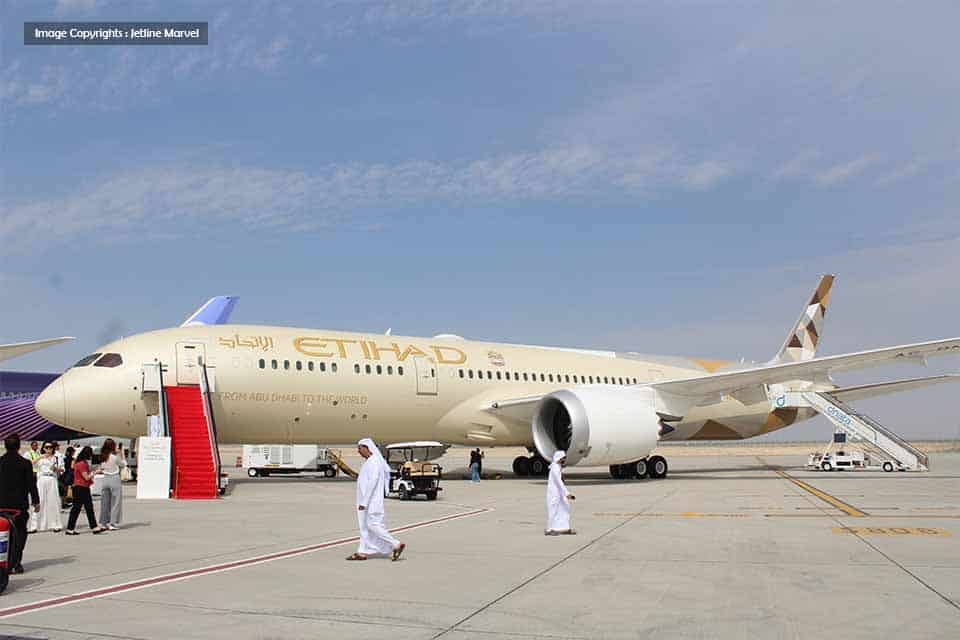
A long-standing codeshare collaboration between JetBlue New York’s Hometown Airline® and Etihad Airways, the national airline of the United Arab Emirates, has expanded to include loyalty benefits beginning on May 8, 2024.
Celebrated today at Dubai’s Arabian Travel Market was the agreement between the two airlines. As a result of the partnership, passengers travelling across the networks of both airlines will now be able to accrue and redeem points in their preferred programme while they are part of JetBlue’s TrueBlue and Etihad Airways’ Etihad Guest.
With Etihad Guest miles redeemable against a variety of experiences, including travel and lodging across the globe as well as the ability to convert miles into reward cards for retail purchases, this alliance enhances the redemption choices offered by the individual programmes.
In addition, JetBlue introduced its new TrueBlue loyalty programme last year, giving members more value than ever before with expanded Mosaic levels for the airline’s most devoted customers, Perks You Pick®, tiles to track status, and more opportunities than ever before to earn perks and status.
TrueBlue recognises that every traveller is unique, thus it allows users to select the benefits that are most important to them and accrue points for every flight, purchase, drive, or shop.
The customer reward programmes expand on the nearly ten-year cooperation between the two airlines, which provides connectivity between New York and Boston to over 70 locations worldwide on Etihad and over 40 destinations in the Americas on JetBlue.
Aviation
Emirates Unveils Plans to Retrofit 191 Aircraft, Including Boeing 777 Upgrade
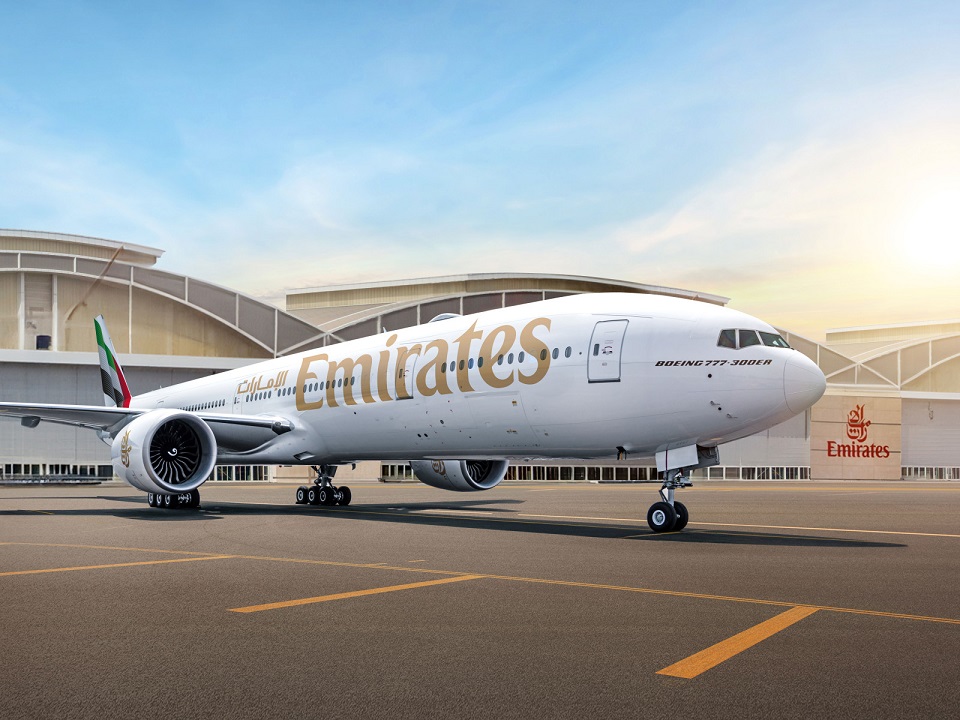
Emirates announced today an ambitious expansion of its aircraft refurbishment program, signaling its commitment to providing an unparalleled travel experience for its customers.
The initiative now includes refurbishing an additional 43 A380s and 28 Boeing 777s, bringing the total number of aircraft undergoing full refurbishment to 191.
Originally slated for 120 aircraft, comprising 67 A380s and 53 777s, the program’s extension reflects Emirates’ dedication to maintaining the excellence of its fleet. The Boeing 777 remains the backbone of the Emirates fleet, while the A380 continues to be a customer favorite, serving as the airline’s flagship.
Emirates has already retrofitted 22 A380s, with plans to commence the interior refresh of the first Boeing 777 in July. Each Boeing 777 will undergo approximately two weeks of refurbishment before re-entering service. Notable upgrades include a refreshed First-Class cabin, new Business Class seats featuring an updated 1-2-1 seating configuration, and the introduction of 24 Premium Economy seats, expanding premium options for travelers.
With the addition of the Premium Economy cabin, Emirates’ Boeing 777 will feature 332 seats across four classes: eight First Class suites, 40 Business Class seats, 24 Premium Economy seats, and 260 Economy Class seats. To accommodate the new Premium Economy cabin, 50 Economy seats will be removed.
Emirates’ in-house Engineering Centre is managing and executing the refurbishment work for its fleet, with over 250 project personnel working tirelessly, supported by 31 major partners and suppliers. These partners have established workshops both onsite and offsite to deliver the refreshed cabins efficiently.
Upon completion of the retrofit program, Emirates will have installed 8,104 next-generation Premium Economy seats, 1,894 refreshed First Class suites, 11,182 upgraded Business Class seats, and 21,814 Economy Class seats across its fleet.
Emirates currently operates refurbished A380 aircraft with Premium Economy on various routes, including to destinations such as New York JFK, Los Angeles, London Heathrow, Sydney, and Dubai. The airline plans to expand services with the new cabin to Osaka in early June.
By February 2025, Emirates aims to offer Premium Economy services to 42 cities, with the introduction of the A350 to its fleet in September and the refurbished Boeing 777s set to serve more cities with the highly sought-after cabin later in the summer.
Aviation
Ranking the 7 Most Powerful Fighter Jets of 2024

Fighter jets stand as indispensable assets in a nation’s defense arsenal, defined by their cutting-edge aircraft designs, formidable engine power, and formidable weaponry. Several countries boast top-tier fighter jets primed for various combat scenarios.
In this article, we’ll delve into the realm of aviation to explore seven of the most formidable fighter jets ever constructed.
The F-22 Raptor is the most powerful fighter aircraft in the world. The fifth-generation aircraft stands as a pinnacle of aviation engineering. Its near-invisibility to radars, coupled with a potent arsenal, makes it the epitome of cutting-edge technology. As the most advanced and costly production fighter aircraft in history, much of its sensors and avionics remain shrouded in secrecy, highlighting its exceptional status. Adopted in 2003, the F-22 was reserved solely for the United States, underscoring its exclusivity.
The F-22’s avionics suite is another key element of its superiority. Equipped with state-of-the-art sensors, radar systems, and electronic warfare capabilities, the F-22 can detect and track multiple targets simultaneously, providing its pilot with unmatched situational awareness.
The F-22 Raptor, a single-seat fighter jet, boasts impressive specifications: it measures 62 feet, 1 inch in length, has a wingspan of 44 feet, 6 inches, and stands at 16 feet, 8 inches tall, with an empty weight of 43,340 pounds and a maximum takeoff weight of 83,500 pounds. Its maximum speed exceeds Mach 2.25, while it can cruise at around Mach 1.82, with a combat radius of over 500 miles and a ferry range surpassing 1,800 miles. Powered by two Pratt & Whitney F119-PW-100 turbofan engines, each generating approximately 35,000 pounds of thrust, the F-22 is armed with an M61A2 20mm Gatling gun and can carry up to 8,000 pounds of ordnance on its four under-wing pylons and two internal bays. Lockheed Martin F-22 Raptor carries a price of $143 million per unit.
Lockheed Martin F-35 (USA)
The F-35 stands out as one of the most versatile aircraft in the realm of fighter jets, offering three distinct versions tailored to meet diverse user requirements. Among its variants, the vertical takeoff and landing (VTOL) version shines as one of the most advanced, albeit slightly pricier. This aircraft boasts cutting-edge avionics, engines, and radar systems, rendering it highly stealthy and adept at swiftly navigating hostile territories.
With dimensions of approximately measures 51 feet in length, 35 feet in wingspan, and 14 feet in height, the F-35 holds a maximum takeoff weight of approximately 70,000 pounds. Propelled by Pratt & Whitney’s F135 engine in the F-35A variant, it also features advanced stealth capabilities, complemented by internal and external hardpoints for mounting a variety of armaments.
The F-35 Lightning II, a fifth-generation stealth fighter jet, stands as a pinnacle of modern military aviation. Developed by Lockheed Martin, it serves multiple roles across the U.S. Air Force, Navy, and Marine Corps, as well as numerous allied nations. With its advanced avionics, sensor fusion capabilities, and stealth technology, the F-35 boasts unprecedented situational awareness and survivability. Its versatility allows it to excel in air-to-air combat, ground attack missions, and reconnaissance. Despite controversies surrounding its cost and development delays, the F-35 remains a vital component of many nations’ defense strategies, reshaping the landscape of aerial warfare. The F35, priced at around $177 million per unit, holds the distinction of being the most expensive aircraft.
Sukhoi Su-57 (Russia)
The Sukhoi Su-57, Russia’s fifth-generation stealth fighter. Its advanced radar system enables it to detect and track multiple targets simultaneously, while its supermaneuverability allows for unmatched agility in dogfights. Additionally, its low observable design reduces radar cross-section, enhancing survivability in contested airspace. Equipped with state-of-the-art electronic warfare systems, the Su-57 possesses a robust defensive capability against modern threats.
Su 57 Powered by two Saturn AL-41F1 afterburning turbofans, the aircraft produces 88.3 kN of thrust dry, 142.2 kN with afterburner. The Su-57 have a top speed of around Mach 2 (2,485 km/h or 1,547 mph) and a maximum range of around 3,500 km (2,175 miles). The estimated unit cost of the Su-57 is approximately $40-50 million USD per aircraft.
Chengdu J-20 (China)
The Chengdu J-20, also known as the “Mighty Dragon,” stands as a twinjet, all-weather stealth fifth-generation fighter aircraft. Among its array of advanced features, the J-20 incorporates a missile launch detector, complemented by a radar warning receiver boasting an impressive detection range of 460 kilometers.
In addition, it is equipped with flare countermeasures to thwart infrared-guided missiles. Powering this formidable aircraft are two Shenyang WS-10C afterburning turbofan engines, with dimensions measuring 21.2 meters in length, 13.01 meters in wingspan, and 4.69 meters in height. The J-20 can reach speeds of up to Mach 2.0 and attain a service ceiling of 20,000 meters (66,000 feet), solidifying its position as a cutting-edge asset in modern aerial warfare. The estimated cost of each J-20 is approximately $110 million USD.
Boeing F/A-18E/F Super Hornet (USA)
The Boeing F/A-18E/F Super Hornet represents a lineage of American supersonic twin-engine, multirole fighter aircraft. Renowned for its versatility across a spectrum of missions ranging from air superiority to ground attack, it holds a pivotal role in modern warfare.
Powered by two General Electric F414-400 turbofan engines, each boasting 13,000 lbf (58 kN) of dry thrust, the Super Hornet features dimensions with a length of 60 feet, a wingspan of 44 feet, and a height of 16 feet. Achieving a maximum speed of Mach 1.6, it exemplifies speed, agility, and adaptability, embodying a cornerstone of contemporary aerial combat capabilities. Super Hornet can cost up to $66.9 million per unit.
Eurofighter Typhoon
The Eurofighter Typhoon represents a collective endeavor within Europe, featuring a multinational, twin-engine, canard delta wing configuration designed for adaptable multirole functionalities. Its principal objective revolves around the disruption and management of enemy air defenses, underscoring its pivotal role on the electronic warfare front.
Propelled by 2 × Eurojet EJ200 afterburning turbofan engines, it boasts dimensions of 15.96 meters in length, a wingspan of 10.95 meters, and a height of 5.28 meters. Capable of reaching speeds of up to 2,125 km/h, its versatility and performance make it a formidable presence in contemporary aviation. The Eurofighter Typhoon comes with a price tag of $124 million per unit.
Dassault Rafale
The Dassault Rafale stands as one of the world’s premier and most formidable fighter aircraft. Hailing from France, Dassault’s Rafale has earned global renown for its exceptional versatility and unmatched performance. Armed with an array of cutting-edge weaponry and advanced radar systems, it boasts remarkable maneuverability and the capacity to carry a diverse range of precision-guided munitions.
Propelled by 2 × Snecma M88-4e turbofans generating 50.04 kN (11,250 lbf) thrust each, it measures 15.27 meters in length, with a wingspan of 10.90 meters and a height of 5.34 meters. With a maximum speed reaching 1,912 km/h, the Rafale epitomizes excellence in modern aerial combat capabilities. The cost of a Rafale ranges between $100 million and $120 million per unit in its most basic configuration.

